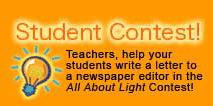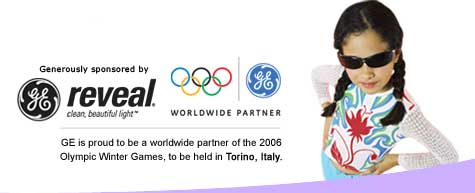 |
|||
|
Lesson 2: How Does Light Move? Goal: Examine refraction and reflection Time required: 40 minutes Materials: How Does Light Move? (PDF) Student Reproducible 2, pencil or pen, flashlight, 3 pieces of paper, hand mirror, penny, clear drinking glass, water Directions:
Yes, light rays can be bent. The penny "disappeared" because the water in the glass bent the light rays so they passed over your head—away from your eyes. The only way to see the penny at this point was to stand up so your eyes intercepted the rays. Yes, light rays can bounce. The mirror changed the path of the light
rays, directing them to a direction opposite the shiny surface. This
was evident because the light rays hit a different wall instead of continuing
forward "through" the mirror. Writing extension: Have students choose one of the experiments and write a formal lab report. The report should include a hypothesis (prediction), materials, procedure, results, and conclusion. View and print items marked (PDF) using Adobe Acrobat Reader© software, version 4.0 or higher. Items marked (PDF Form) feature editable areas. Save edits with version 7.0 or higher. Get
Adobe Reader for free.
|
 To get started, distribute this contest
entry form (PDF), contest
entry page (PDF), and family
contest activity (PDF).
Students Have a Chance to Win: • $5,000 or $1,250 U.S. savings bond
• Scholastic Inventor's Gift Pack of Books
Teachers Have a Chance to Win: • $250 GE Science Grant
• $250 Scholastic gift certificate
• One-year home supply of light bulbs
• Science-themed set of library books
Classrooms Have a Chance to Win: • Class visit from an Olympic athlete
• Class set of collectible GE Olympic Games
pins
All winners receive a collectible GE Olympic Games pin and a certificate of participation! Entries must be postmarked by GE and Reveal are trademarks
of
General Electric Company.
|
||

Photo Credits: © Digital Vision/PictureQuest; © Bananastock/PictureQuest.
|
|||